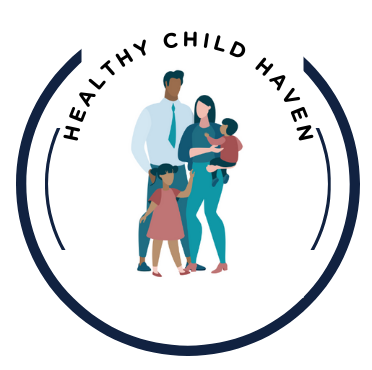
Gluten is a protein found in certain grains like wheat, barley, and rye. It’s what helps dough rise and gives bread its chewy texture. Some people can eat gluten all day long without a hitch, but for others with celiac disease or gluten sensitivity, it can cause a real mess in the gut.
Casein, on the other hand, is a protein that’s hiding in dairy products like milk and cheese. It’s one of the reasons cheese melts so nicely on a pizza. Sadly, for those who are lactose intolerant or have a casein allergy, this protein can cause discomfort or allergic reactions.
So why all the fuss about gluten and casein? Well, these proteins can be tricky for some folks to digest. In those with allergies or sensitivities, they can trigger immune responses, leading to a range of symptoms from digestive issues to skin rashes. As mentioned in my other posts the autism community has embraced that there are impacts of casein and gluten and freeing their diet has proven to be of great benefit. I can attest to that from my own personal experience. Autism and GFCF diet
For many people, cutting out gluten and casein isn’t just a dietary choice—it’s necessary to avoid discomfort or health problems. Understanding what these proteins are and how they affect the body is the first step to managing dietary needs effectively.

Identifying Gluten-Free and Casein-Free Foods
Gluten can sneak its way into many foods, often where you’d least expect it. Sure, it’s in bread, pasta, and cereals, but you might also find it in sauces and processed foods due to thickeners and flavorings. So, reading labels is a must for anyone avoiding gluten.
Casein primarily hangs out in dairy products. That means milk, cheese, yogurt, and anything made from them can be loaded with casein. Even non-dairy products can sometimes be cross-contaminated, so always keep an eye on those labels.
Fortunately, the world of gluten-free alternatives is growing. Grains like rice, quinoa, and millet are naturally gluten-free and offer great substitutes for traditional wheat products. Plus, you can find gluten-free flour made from almonds, chickpeas, or buckwheat, perfect for baking without the bloat.
Avoiding casein is less daunting than it once was, thanks to an abundance of plant-based milk like almond, soy, or oat milk, along with dairy-free cheeses and yogurts available in many grocery stores. These alternatives can make it easier to create delicious meals without the digestive drama of casein.
Balancing a diet without gluten or casein can get kind of tricky, but stocking up on naturally gluten-free and casein-free essentials is a good move. This ensures there’s always something tasty and safe to eat. Getting creative with recipes and flavors can make this dietary adventure not only manageable but fun.
Living a Gluten-Free, Casein-Free Lifestyle
Eating without gluten or casein might feel like a challenge at first, but once you get the hang of it, there are plenty of delicious options out there. Start with a solid meal plan. Prepping meals ahead of time ensures you always have a safe and tasty option ready, avoiding the last-minute scramble.
For those wondering “What foods are gluten-free and casein-free?” — think fresh fruits and veggies, lean meats, and fish. Most of these are naturally free from both gluten and casein. Nuts, seeds, and legumes are great picks also — just make sure they haven’t been processed in facilities that handle gluten-containing grains or dairy.
Packaged products can be hit or miss. There’s a growing market for gluten-free, casein-free products like breads, cereals, and snacks. Brands often proudly label themselves as GFCF (gluten-free, casein-free), making it easier to shop, but it’s always about checking those ingredient lists to be extra sure.
Eating out doesn’t have to be a headache. Many restaurants now offer gluten-free options, and some cater specifically to dairy-free or vegan diets. Asking questions about preparation methods and possible cross-contamination helps keep you in the clear. Apps and social media groups can offer recommendations for friendly spots in your area.
Living this lifestyle is about being curious and adventurous. Trying new foods and recipes keeps things exciting. The goal? Enjoying meals that are both satisfying and fit your dietary needs.
Clarifying Myths: Does Pasta Contain Casein?
Pasta is one of those beloved staples that cause a bit of confusion when it comes to gluten and casein content. So, does pasta contain casein? Typically, no! Traditional pasta made from wheat is free from casein, as casein is a protein found in dairy products, not grains. However, it does contain gluten unless specifically labeled as gluten-free.
Regular pasta made from wheat is a no-go for anyone avoiding gluten, but you can find lots of gluten-free pasta options made from rice, corn, or legumes. These alternatives help you enjoy your favorite pasta dishes without compromising your dietary needs.
But remember, it’s not just about avoiding gluten — always check the labels when buying gluten-free pasta to ensure it’s also free from casein. Some gluten-free pasta might contain dairy ingredients in their sauces or fillings. Plain gluten-free pasta that you cook up at home should be casein-free on its own.
Making informed choices means understanding what goes into your food. Always scrutinize ingredient lists for hidden dairy components or unexpected gluten-containing additives. The more you know, the easier it is to navigate a gluten-free, casein-free lifestyle without giving up on the joy of a good bowl of pasta.
